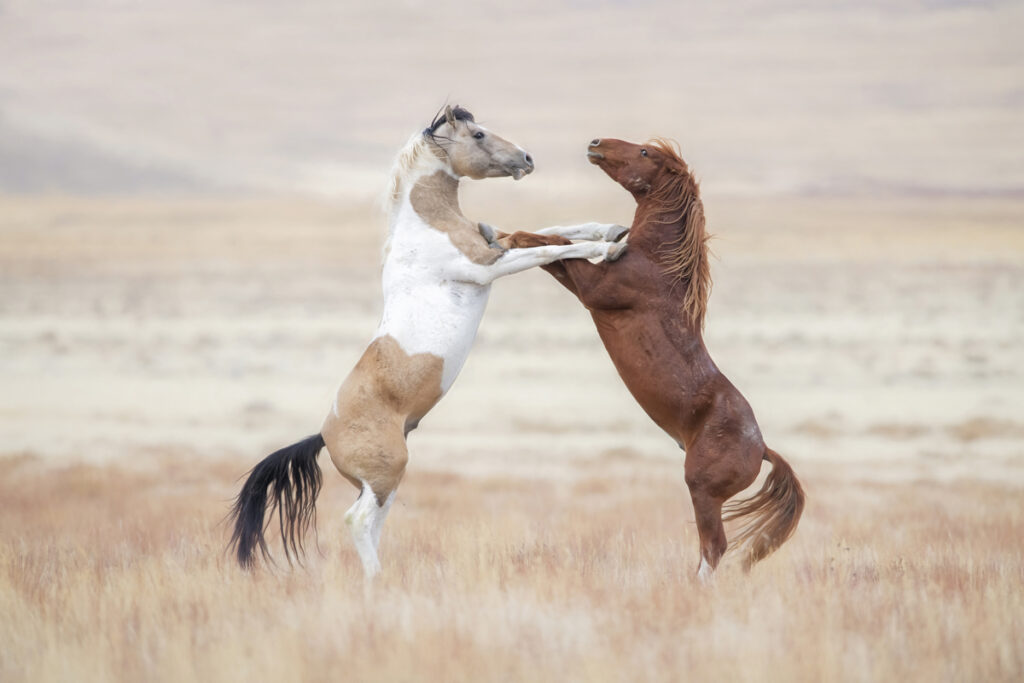
If you can, I highly suggest you head to where the wild ones are.
You may choose to head west where you will find Wild Horses in ten states: Arizona, California, Colorado, Idaho, Montana, Nevada, Oregon, Utah and Wyoming. In the east, we do have Wild Horses in the following states as well: Georgia, Kentucky, Mississippi, Tennessee, Florida, Maryland, Virginia and North Carolina.
I will not get into the politics and management here about Wild Horses, just to say please go while you can to see the beauty of the wild ones in their natural state…. just trying to survive.
Please remember first and foremost that your number one concern is safety… yours and theirs. Observe a distance of at least 50 feet from any wild horse at any given time. During breeding season, the animals may be exceptionally aggressive and protective of their foals. Do not interfere, chase or follow them too closely.
Some will be friendlier than others but please don’t mistake their friendliness and curiosity for tameness. If a horse approaches you, stand very still and be quiet. The horse’s behavior may be unpredictable, let them have a sniff and most of the time they will move on.
Always keep in mind that they are Wild Animals.
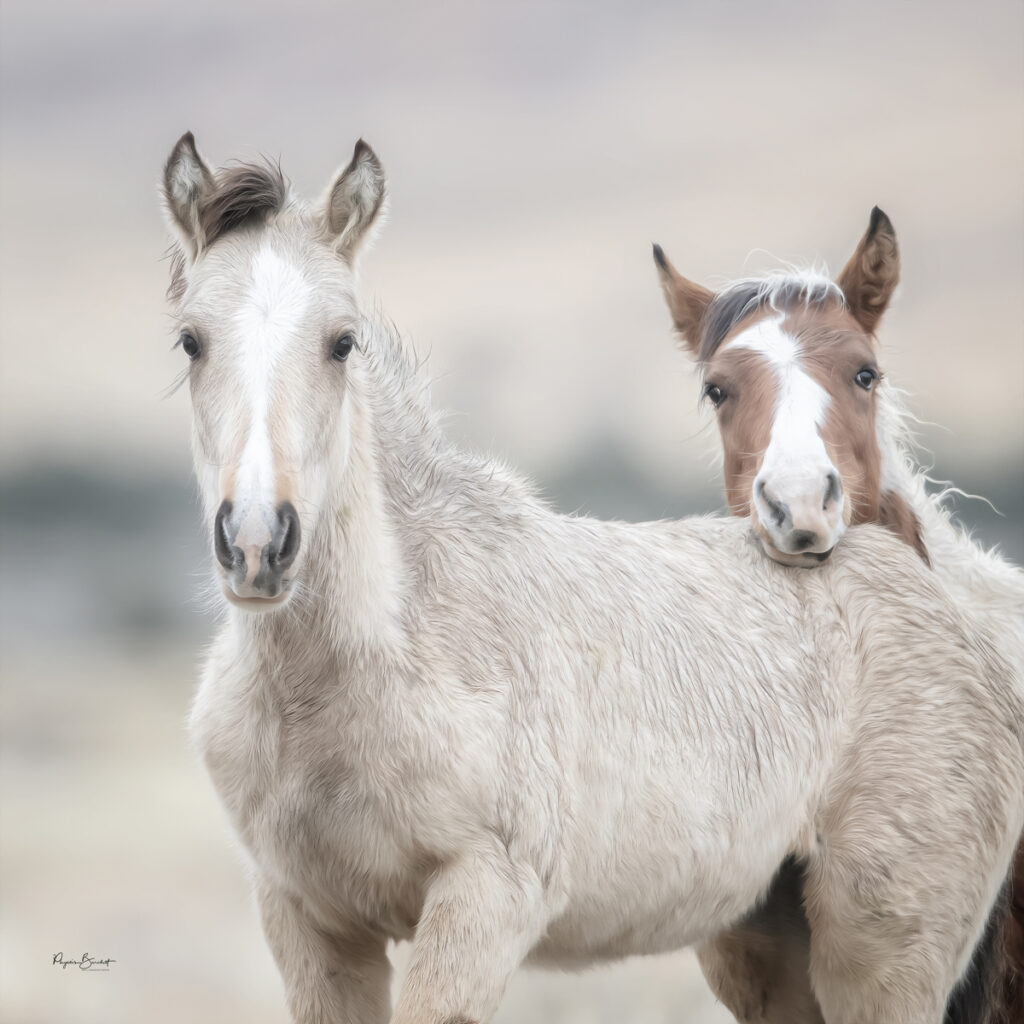
Because horses are herd animals it can be harder to get a good composition. This is where knowing their behavior will come in handy… wild horses have their natural instincts will intact and this is really cool to observe!
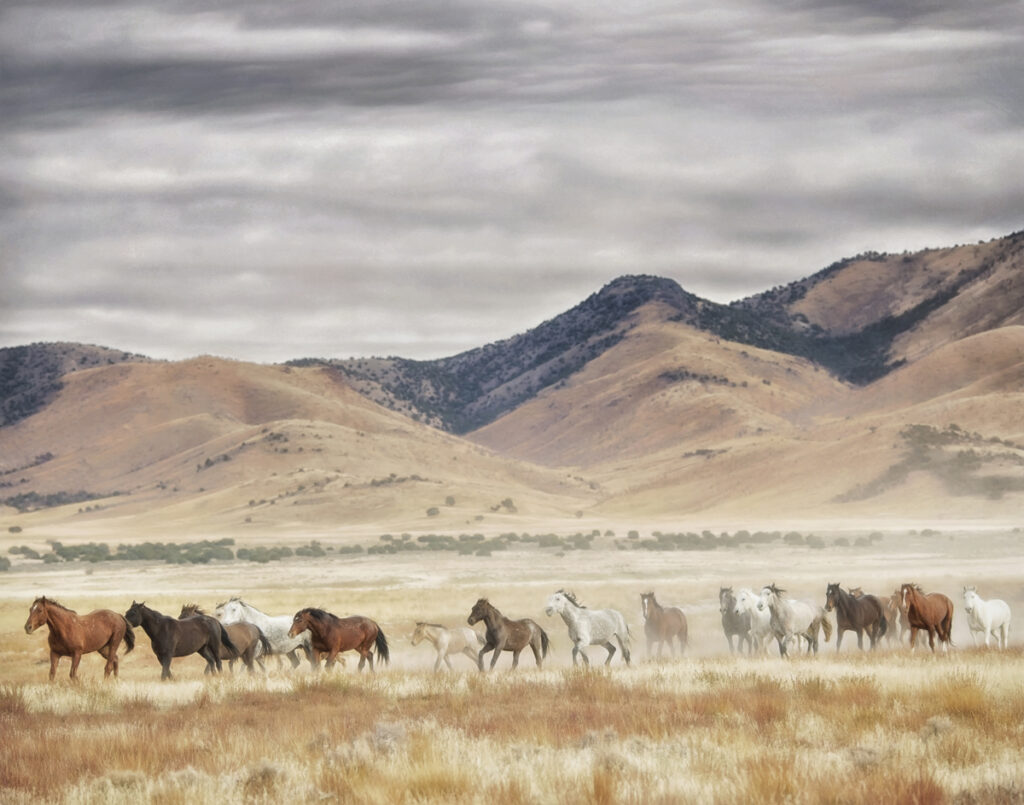
Knowing when and where the bands will come to water is a huge plus.
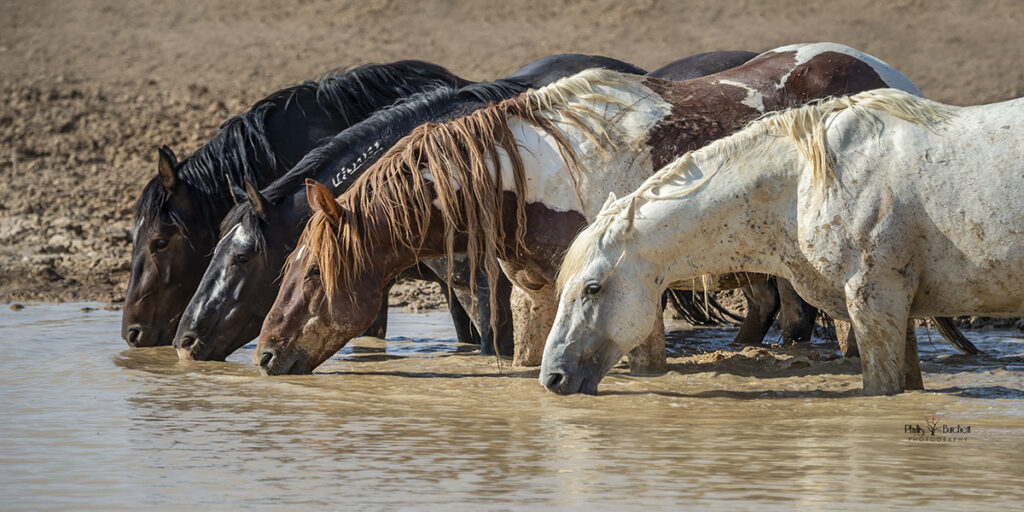
“Snaking” is a herding behavior primarily displayed by stallions in wild horse herds. Snaking is utilized by stallions in herding because of its effectiveness in making other horses move in the desired direction.
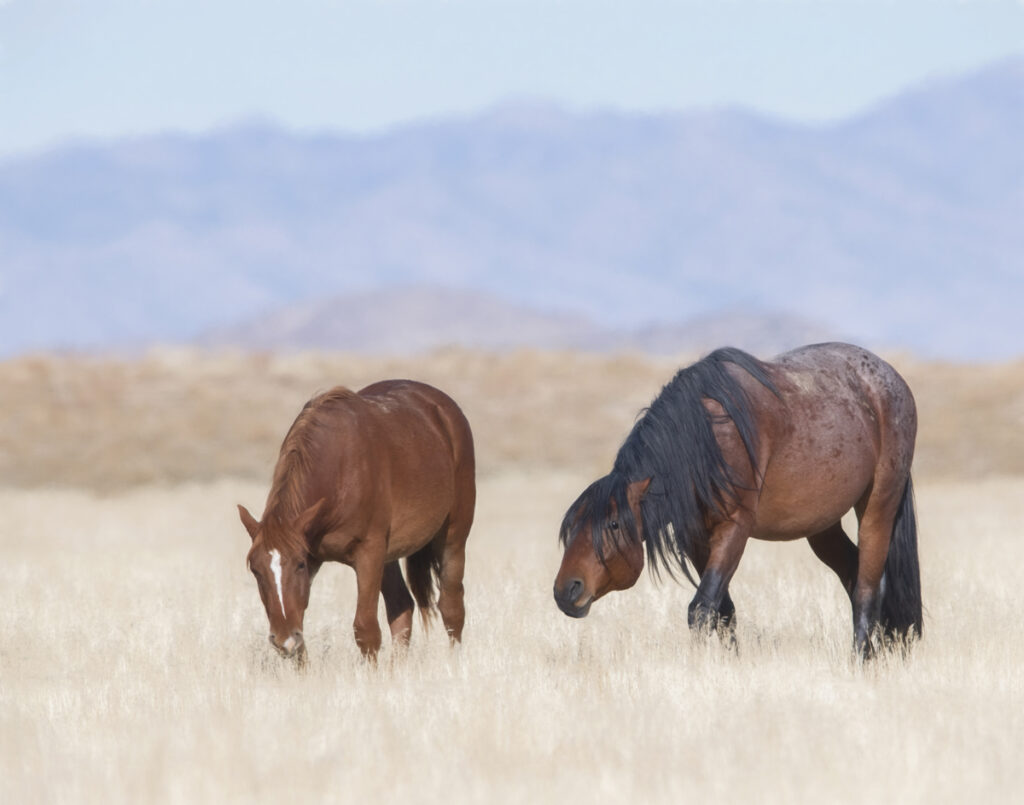
The stallions are the ones most likely to run the show. Each group or band within a herd consists of one stallion who presides over a group of mares. The number of mares will vary depending on how aggressive the stallion is. The more mares he acquires, the more time he will spend trying to keep them in line and warding off rival stallions’ attempts to steal his mares.
Foals will typically stay with their mothers for up to a year and stay with the band for two or three years before the band stallion kicks them out or they get stolen by another band stallion. Once a colt or young stallion reaches maturity, his hormones kick in and he will start to take an interest in his father’s mares.
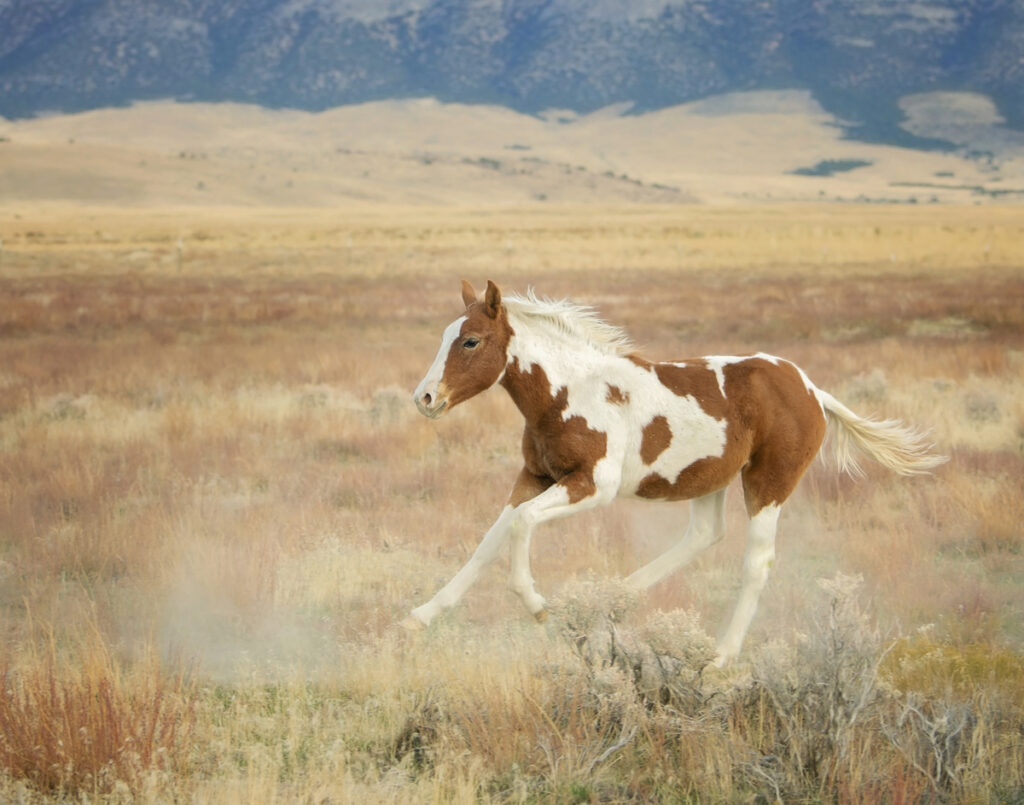
The younger stallions that are evicted from the herds become what we call bachelor stallions.
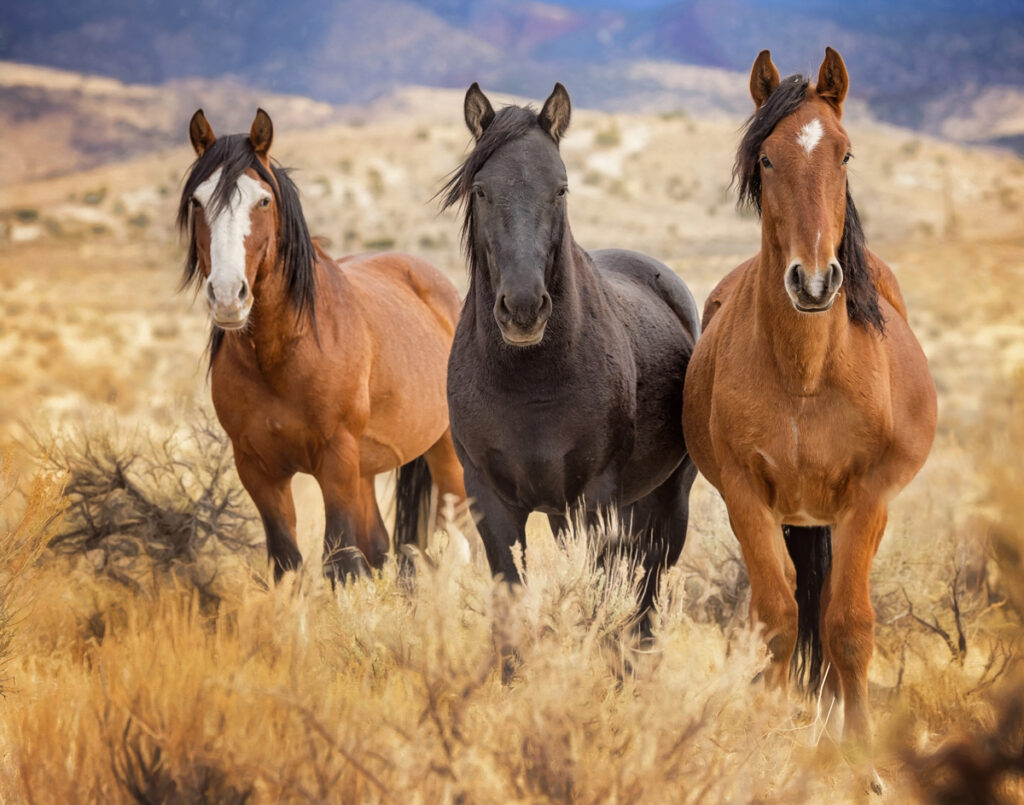
Group of Bachelor Stallions, Nevada
In order to keep my distance when shooting wild horses, I may take my 600mm F4 lens on a tripod along with an 80-400mm or 70-200mm to capture more of the landscape. Most of the time in the west, you’re not far from your vehicle. If you’re hiking then you may need to make adjustments to your equipment as to what you can manage to carry.
Since horses are grazing animals, they will, of course spend a great deal of time eating. Therefore, schedule your time to photograph when they are generally most active. As with most wild animals the horses will be most active early in the morning and at dusk. Look especially for interactions between the animals. Eye contact is key here as well, always look for animals that are looking directly at you. Be ready, that gaze may not last long!
Portraits and details, especially if you have windblown manes always make beautiful images, that movement will draw your viewer into the scene.
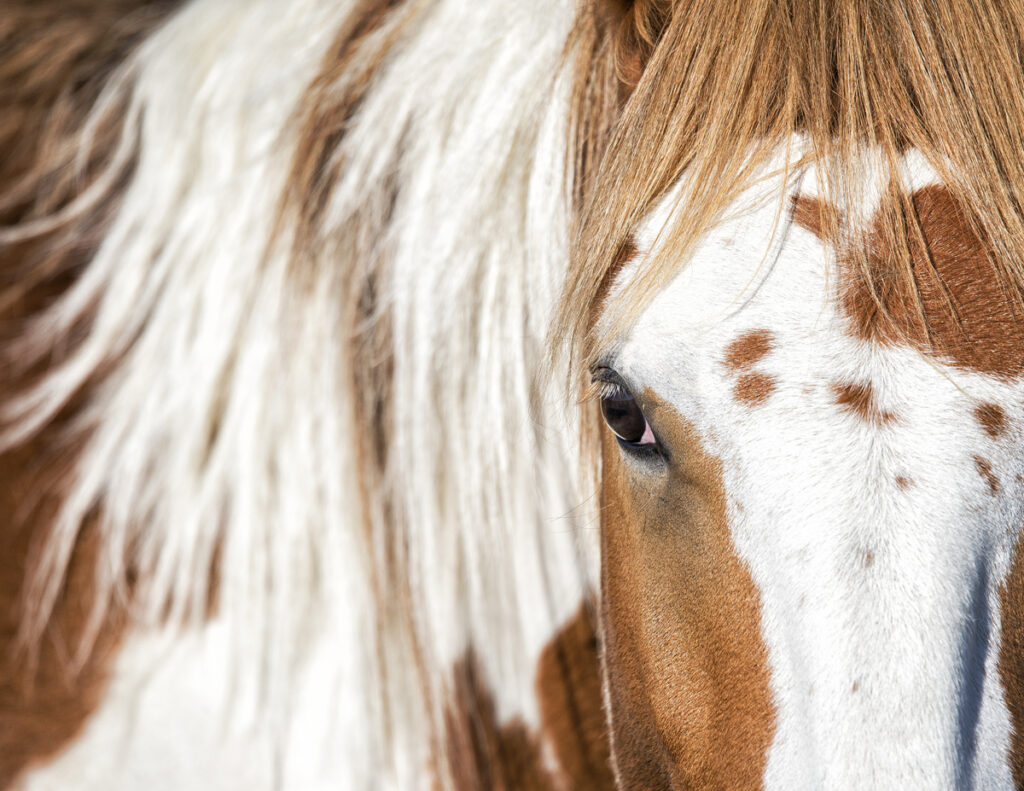
Herds may consist anywhere between as little as three to 15 or more. I often look for groups of three or five to focus on. Separation between the horses will give you a more pleasing composition.
If you’re out early or late you will also have the advantage of better light, pay attention to how the shadows fall.
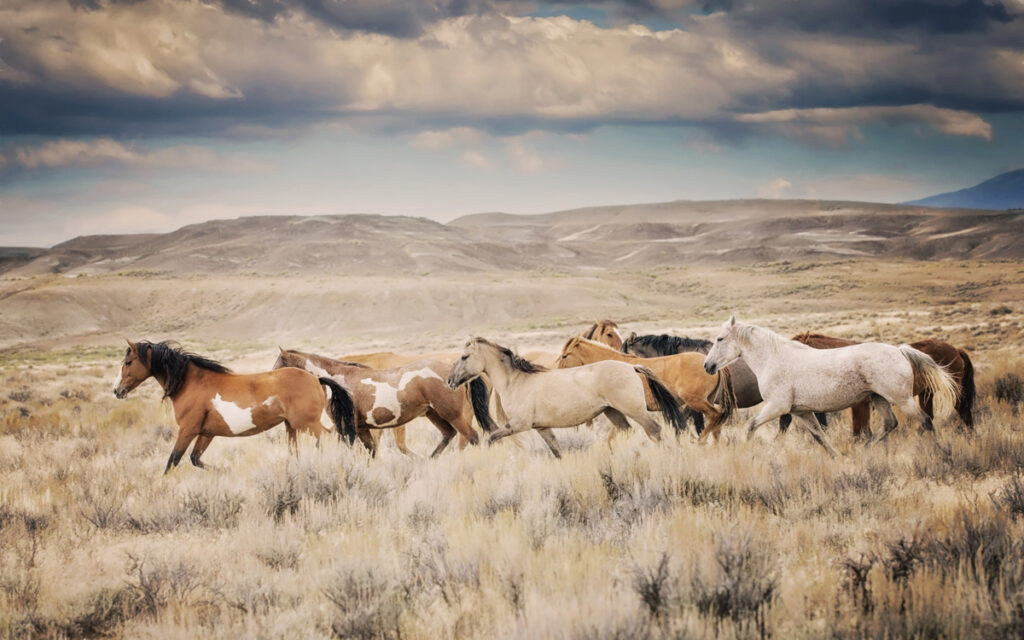
Sand Wash Basin, Colorado
The similar rules of shooting horses at liberty apply here with photography, you will most certainly have beautiful backdrops in these locations.
Sometimes the horses can be hard to find and hiring a guide or going with a friend that knows the herds will be beneficial. It can be a waiting game at times but worth it when you get those amazing shots.
Spending time with Wild Horses and taking the time to simply sit and watch their behavior has been one of the most rewarding experiences of my equine photographic journey. I hope you get the chance to do so as well!
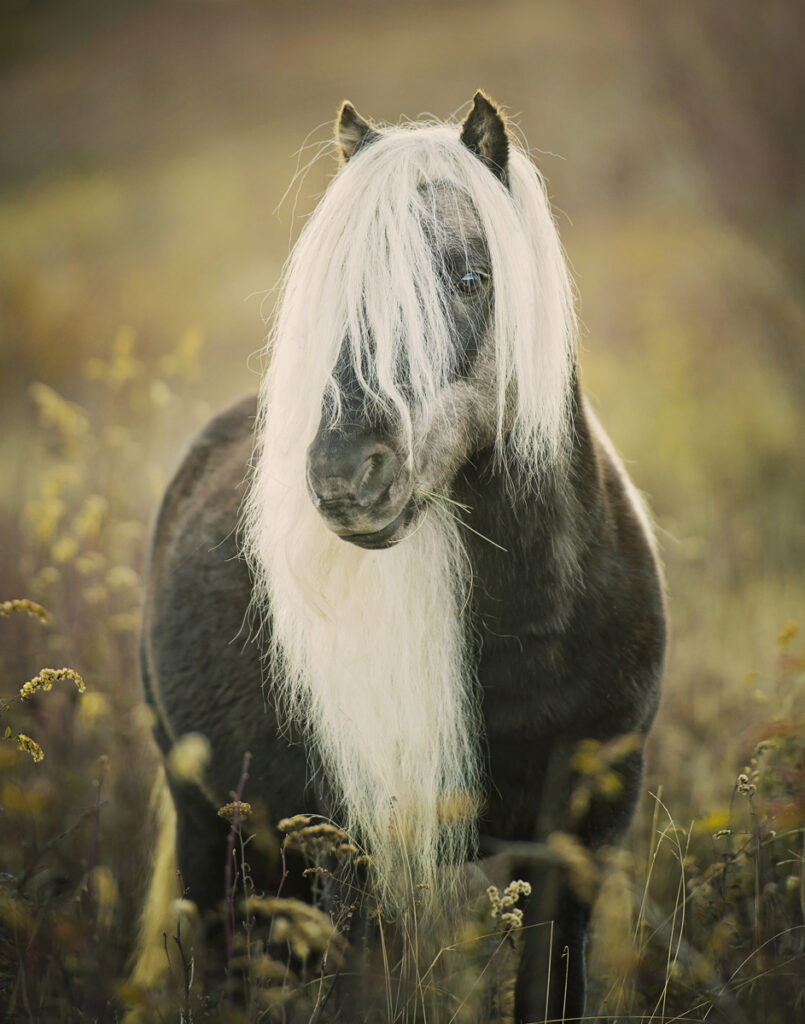 Grayson Highlands State Park, Virginia
Grayson Highlands State Park, Virginia
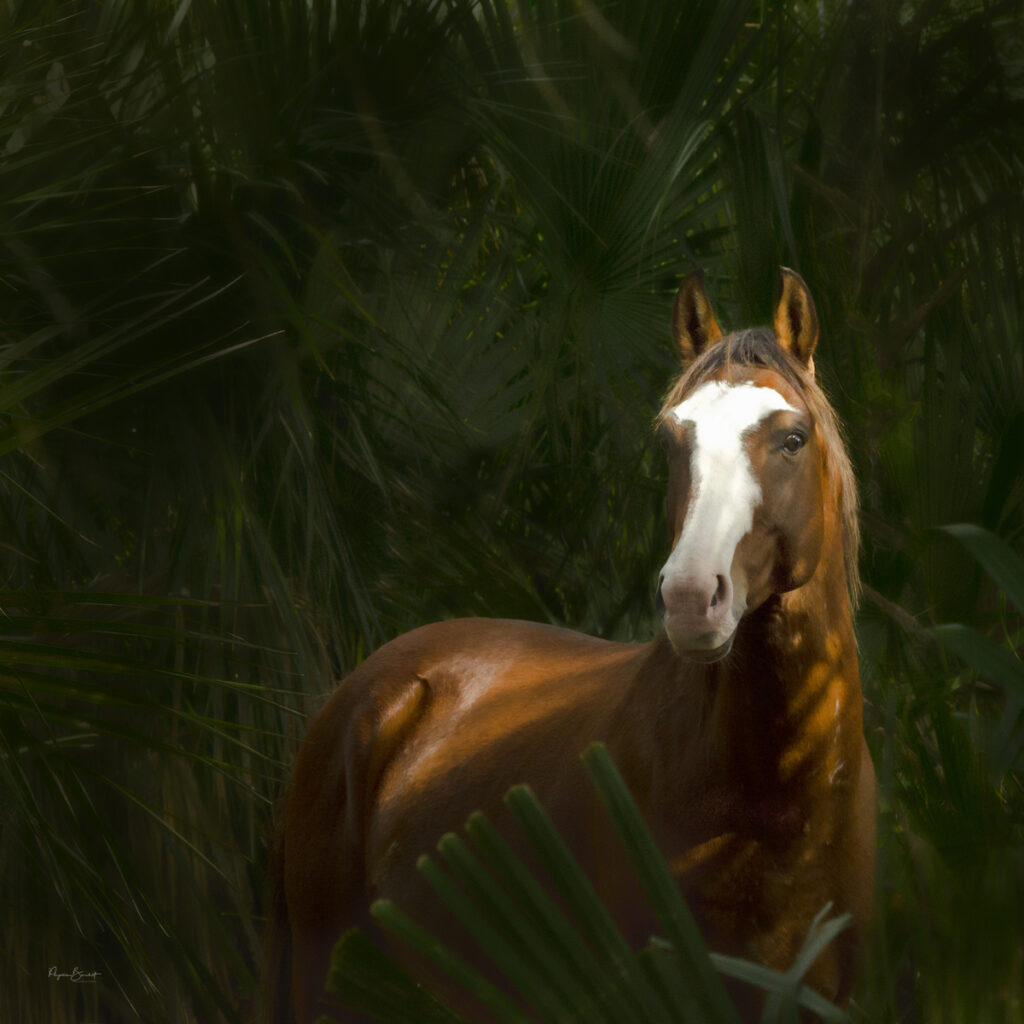
Cumberland Island, Georgia
 Shackleford Island, North Carolina
Shackleford Island, North Carolina
Resources to help find Wild Horses:
https://en.wikipedia.org/wiki/List_of_Bureau_of_Land_Management_Herd_Management_Areas
https://www.smithsonianmag.com/travel/best-places-see-wild-horses-north-america-180956363/
Click here if you’d like to help our Wild Horses:
https://americanwildhorsecampaign.org/
https://www.savingamericasmustangs.org/
There are also some wonderful sanctuaries where you can have the opportunity to photograph Wild Horses that have been adopted in family groups. To name a few:
Private land owners approved by the BLM to care for wild horses:
https://deerwoodranchwildhorseecosanctuary.com/

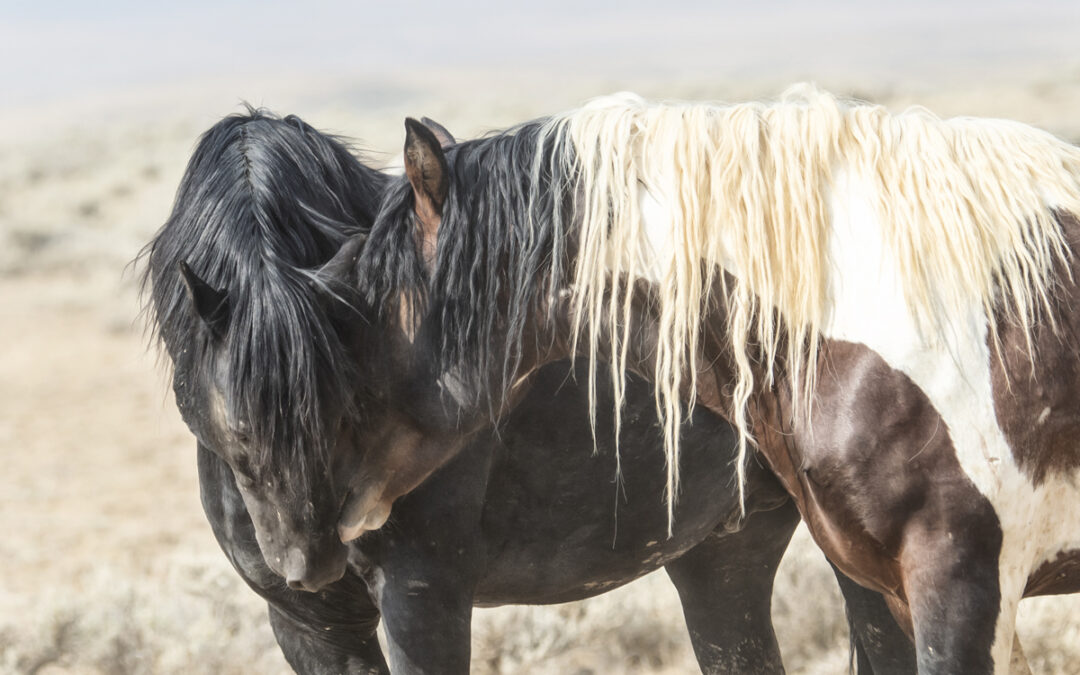
Great info. Thanks
Have some in my area here in Nevada
Hi Dene, I’ve photographed some around Reno. I think they were the Palomino Valley bands, it’s possible some have been rounded up now which is sad.
Hope you are doing well! PB